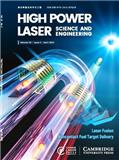
高功率激光科学与工程(英文版)(High Power Laser Science and Engineering) 知网万方目次维普目次
- CSCD
- 高T2
- 主管单位:
中国科学院
- 主办单位:
中国科学院上海光学精密机械研究所、中国光学学会
- 国际刊号:
2095-4719;EISSN2052-3289
- 国内刊号:
31-2078/O4
- 学科分类:
- 字数:
6000-62000
- 有无基金:
/有基金 100.0%
- 周期:
CN外文-双月刊
- 特殊属性:
第一批认定学术期刊
- 电话:
021-69918302(官网电话)
- 邮箱:
hplaser@siom.ac.cnzhilanli@siom.ac.cn(官网邮箱)
- 复合因子:
0.982
- 综合因子:
0.891
- 收录:
知网,万方目次,维普目次
- 级别:
CSCD,高T2
期刊简介
《高功率激光科学与工程》期刊已被查看: 次
更新频次
低频栏目:
2023年04期文章-16.7%-期平均发文量10篇
2023年03期文章-16.7%-期平均发文量12篇
2023年02期文章-16.7%-期平均发文量16篇
2023年01期文章-16.7%-期平均发文量14篇
2022年06期文章-16.7%-期平均发文量13篇
2022年05期文章-16.7%-期平均发文量7篇
单位占比
其他-100.0%一作占比
/有基金-100.0%投稿指南
1、投稿方式:在线投稿。
2、刊内网址:http://journals.cambridge.org/hpl
自动跳转至:
https://www.cambridge.org/core/journals/high-power-laser-science-and-engineering
http://hpl.researching.cn/
自动跳转至:https://www.researching.cn/hpl
3、投稿系统:
http://mc03.manuscriptcentral.com/clp-hpl
4、出刊日期:双月刊,逢双月出版。
2024年4月15日星期一
《高功率激光科学与工程(英文版)》作者须知
【官网信息】
HPL Author Instructions
AIMS AND SCOPE
High Power Laser Science and Engineering is an international, peer-reviewed open access journal which focuses on all aspects of high power laser science and engineering. High Power Laser Science and Engineering publishes research that seeks to uncover the underlying science and engineering in the fields of high energy density physics, high power lasers, advanced laser technology and applications, laser components. Topics covered include laser-plasma interaction, ultra-intense ultra-short pulse laser interaction with matter, attosecond physics, laser design, modeling and optimization, laser amplifiers, nonlinear optics, laser engineering, optical materials, optical devices, fiber lasers, diode-pumped solid state lasers, excimer lasers.'
ORIGINALITY, OPEN ACCESS LICENCE TO PUBLISH FORM AND COPYRIGHT
To be considered for publication in HPL, a manuscript cannot have been published previously, nor can it be under review for publication elsewhere. Papers with multiple authors are considered for publication in HPL with the assumption that all authors have approved the submitted manuscript and concur in its submission to HPL.
For accepted articles, a Licence to Publish form must be completed before the article can be published. Authors are responsible for obtaining written permission from the copyright owners to reprint any previously published material included in their article.
The online version of article is published within an Open Access environment subject to the conditions of the Creative Commons Attribution licence: <http://creativecommons.org/licenses/by/4.0/>.
OPEN ACCESS
All articles published in HPL are made freely and permanently accessible online immediately upon publication under an Open Access Creative Commons license.
Articles will be published under a creative commons attribution (CC-BY) licence as standard, but authors may elect to publish under the following alternative licences:
CC-BY-NC-SA (Attribution - Non-Commercial - Share Alike)
CC-BY-NC-ND (Attribution - Non-Commercial - No Derivatives)
Open access publishing in HPL is funded through levying an article processing charge (APC) on each individual author's institution or funding body. In 2020, the APC for HPL is £1800 / $2870 plus VAT where applicable.
Upon acceptance for publication the corresponding author will be contacted on behalf of Cambridge University Press by Rightslink, who will administer the collection of the charge. At that stage the corresponding author can pay by credit card or arrange for an invoice to be issued to his or her funding body or institution.
Author(s) may request a discretionary waiver if they are not able to cover the funds of the APC. Requests must be made prior to submission, before the article enters editorial consideration and will be decided upon by the Publisher, without the knowledge of the editorial board. The author(s) must provide documentary evidence for their request (i.e., a letter from the institution or funder), indicating that no APC funds are available. Waiver requests made after article submission will result in a denied request. The APC charge will be waived for certain commissioned articles and Editorials and in rare cases when authors and their institutes can clearly demonstrate inability to pay. To ensure availability of funding has no bearing on editorial decisions, the Editors of HPL are never involved in correspondence with authors on payment of publication charges. All APC waiver requests must be submitted directly to the publisher prior to submission.
A full waiver of the APC will be granted automatically where the corresponding author is based in a Research4Life Group A country, and a 50% waiver will be granted where the corresponding author is based in a Research4Life Group B country.
Cambridge University Press has made a number of Read and Publish agreements to support Open Access publishing journals for publicly financed research articles. To check if you are eligible to publish under this model, please check online here.
MANUSCRIPT SUBMISSION AND REVIEW
Manuscripts must be written in English. All manuscripts will be referred to acknowledged experts in the subject for peer-review. HPL uses single-blind peer-review.
All manuscripts must be submitted online at http://mc03.manuscriptcentral.com/clp-hpl. In order to submit a manuscript, authors need an account on the online system. If you are a new user, click the "Register Here" link on the login page to create an account for yourself. If you are unsure whether you have an account or have forgotten your login details, please use the option “Password Help” on the login page and follow the instructions: your login details will be emailed to you immediately if you are already registered. Please do NOT create another account on the system if you have forgotten your password.
Once you have logged in the online system, please go to your Author Centre and follow the instructions to submit a manuscript.
TYPES OF PAPER
Research article. Regular submissions to HPL are termed ‘research articles’ and must contain original research. Papers should be written in a concise manner; though HPL has no page limit, each paper will be judged on its own merits, and those deemed excessive in length will be rejected or will require significant revision.
Review. Articles reviewing the developments and achievements within areas of interest to the laser science community are welcomed as ‘reviews’. Reviews must be fully referenced and authors should take care to avoid excessive length.
Letter. HPL Letters are short communications of original research that is of the highest quality and particular urgency. These papers receive expedited peer review and expedited copyediting/typesetting to accelerate publication.
Perspective. HPL Perspectives are reviewed by the journal Editor-in-Chief before being published, rather than undergoing a full peer review. These articles reflect the opinions of the authors rather than those of the journal and Editorial Board.
Special Issue Paper. On occasion, HPL publishes a collection of articles dedicated to a particular theme. In such cases, papers are usually commissioned and an additional paper type is temporarily made available.
MANUSCRIPT PREPARATION AND STYLE
Manuscripts should be typed in double spacing throughout, including tables, footnotes, references and legends to tables and figures. There should be a margin of at least 2.5 cm all around. The position of tables and figures should be clearly indicated, in sequence, in the text.
Manuscripts should be organized as follows:
Title page. This page should include (a) the article’s full title, (b) names and affiliations of all authors, (c) the name, mailing address, and telephone number of the corresponding author.
Abstract and keywords. The abstract should be no longer than 150 words. It should be informative, without descriptive words or citations, and contain the major conclusions and quantitative results or other significant items in the paper. Together with the title, the abstract must be adequate as an index to all the subjects treated in the paper, and will be used as a base for indexing.
The authors should provide from 2 to 5 keywords that reflect the content of the article.
Tables. Tables should be numbered consecutively and each should be typed doublespaced. All tables must be cited and their approximate positions indicated in the text. Tables should be appended on separate sheets and identified with appropriate titles. The table title, which should be brief, goes above the table. A detailed description of its contents or table footnotes should be given directly below the body of the table.
Figures. Figures should be supplied no larger than 8 × 10” (approx. 200 × 250 mm) and must be cameraready. Figures will normally be reduced to one column width (6-8 cm). In the figures, the main lines should be about 0.3 mm in width, and the assistant lines 0.15 mm. Notations in the figures should be distinct and consistent with the same ones in the text, and their font size will be 7-9 pt. The positions of figures should be marked in the text by boxes of a suitable size. Each figure should have its own caption. For photographs, the original photos must be supplied with good contrast and clearly distinguishable details.
Acknowledgement. Please identify all funding sources (by name and contract number, as appropriate) in the acknowledgments.
References. References must be published work and must be numbered consecutively in order of their first citation. References should be listed individually at the end of the text and indicated in the text with a superscript number in square brackets. All of the references’ authors should be given.
Here are some examples of how to set the most common reference types:
Journals: Danson, N. C., Haefner, C., Bromage, J., and Butcher, T., High Power Laser Sci. Eng. 7, e54 (2019).
Books: N. Bloembergen, Nonlinear Optics (Benjamin, New York, 1965).
Conference proceedings: R. E. Kalman, “A new approach to linear filtering and prediction problems”, in Proceedings of Advanced Seminar on Generalized Inverse and Applications, M. Z. Nashed, ed. (Academic, San Diego, CA, USA, 1976), p. 111.
Patents: A. C. Hart, Jr., R. G. Huff, and K. L. Walker, “Method of making a fiber having low polarization mode dispersion due to a permanent spin”, U.S. patent 5,298,047 (March 29, 1994).
Dissertations: K. L. Corwin, “A circularly-polarized optical dipole trap and other developments in laser trapping of atoms”, PhD. Thesis (University of Colorado, 1999).
Online references: H. R. Sheikh, Z. Wang, L. Cormack, and A. C. Bovik, “Live image quality assessment database release 2”, http://live.ece.utexas.edu/research/quality (September 8, 2006).
Tips: The authors are recommended to use reference manager tools to arrange the list of references before submission. Citation style files for EndNote can be downloaded from the HPL instructions for authors page.
COPYEDITINGAND PAGE PROOFS
The publisher reserves the right to copyedit manuscripts to conform to the style of HPL. The corresponding author will receive page proofs for final proofreading. No rewriting of the final accepted manuscript is permitted at the proof stage, and substantial changes may be charged to the authors.
OFFPRINTS
No paper offprints are provided, but the corresponding author will receive the pdf of the published article.
Print offprints may be purchased at extra cost at proof stage.
CAMBRIDGE LANGUAGE EDITING SERVICE
We suggest that authors whose first language is not English have their manuscripts checked by a native English speaker before submission. This is optional but will help to ensure that any submissions that reach peer review can be judged exclusively on academic merit. We offer a Cambridge service which you can find out more about here, and suggest that authors make contact as appropriate. Please note that use of language editing services is voluntary and at the author’s own expense. Use of these services does not guarantee that the manuscript will be accepted for publication nor does it restrict the author to submitting to a Cambridge-published journal.
PERMISSIONS
Authors wishing to include figures or tables that have already been published elsewhere are required to obtain permission from the copyright owner(s) for both the print and online format and to include evidence that such permission has been granted when submitting their papers. Any material received without such evidence will be assumed to originate from the authors.
上一篇:中国俄语教学下一篇:废弃物处置与可持续能源(英文)(Waste Disposal & Sustainable Energy)
《高功率激光科学与工程》同类物理期刊
-
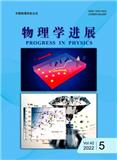
物理学进展(不收版面费审稿费)
北核,武A
CN中文-双月刊影响因子0.368
-
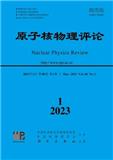
原子核物理评论
北核,科核,CSCD扩,高T3
CN中文-季刊影响因子0.365
-

波谱学杂志
科核,武A-
CN中文-季刊影响因子0.935
-
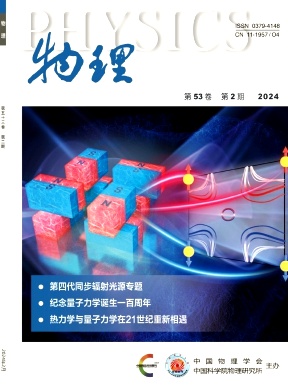
物理
北核,武B+
CN中文-月刊影响因子1.153
-
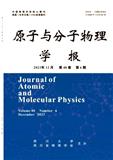
原子与分子物理学报
北核,武B+
CN中文-双月刊影响因子0.667
-
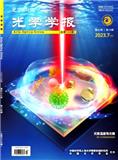
光学学报
北核,CSCD,科核,武A+,高T1,EI(中国2024)
CN中文-半月刊影响因子2.91
-
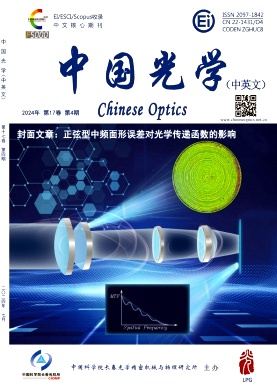
中国光学(中英文)(原:中国光学与应用光学)
北核,CSCD,科核,武A,高T2,EI(中国2024)
CN中文-双月刊影响因子2.336
-
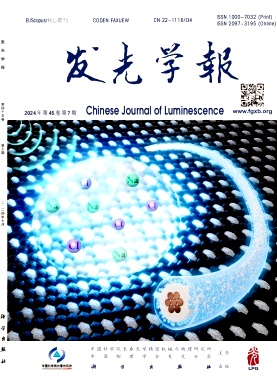
发光学报
北核,CSCD,科核,武A,高T2,高T3,EI(中国2024)
CN中文-月刊影响因子1.356
常见问题
-
高功率激光科学与工程杂志社官网、联系方式是什么?
高功率激光科学与工程杂志社官网:https://www.researching.cn/hpl
投稿网址:http://mc03.manuscriptcentral.com/clp-hpl联系电话:021-69918302(官网电话)
投稿邮箱:hplaser@siom.ac.cnzhilanli@siom.ac.cn(官网邮箱) -
高功率激光科学与工程杂志是核心期刊么?
高功率激光科学与工程是核心期刊,级别是:CSCD,高T2, 是:物理分类下的知网,万方目次,维普目次收录的期刊。
-
请问你们是高功率激光科学与工程杂志社吗?
我们不是《高功率激光科学与工程》杂志社。本站主要从事期刊信息展示与期刊推荐,不是任何杂志官网,直投稿件请联系杂志社。本站仅提供免费的学术指导、论文辅导、期刊投稿信息整理收集服务。
-
你们指导服务后可以保证文章被发表吗?
期刊发表的成功与否,主要取决于文章内容的质量。编辑老师会根据研究领域、创新性等多因素进行考量。我们会帮助您理解期刊的发表要求,助力提升发表几率,从而增加发表的机会。
-
晋级论文能否在报纸上发表?
在学术界,论文的发表往往被视为研究者职业发展的重要一环。晋级论文,即为了获得更高职称或学术地位而撰写的学术论文,通常需在专业期刊上发表。然而,许多人可能会问
